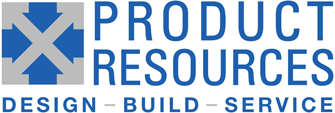Additive manufacturing is a booming business and an extremely beneficial aid during product development. It is important to study the capabilities of the printer before buying one so that you have a system that can be effective in your organization.
A better choice may be to outsource 3D printing to companies that specialize in it. 3D printers can be inexpensive, but highly capable 3D printers tend to have higher capital costs and significant operational costs too. In those cases, having access to 3D printing from companies that specialize in it and keep up with the quickly changing technology may be a better choice than owning.
There are several advantages to using 3D Printing:
- Tangible Design – not everyone can look at a print or a CAD model and visualize the look and feel of a product or component. Having access to a representation of the part can make it easier to visualize the part, check fit, or demonstrate the features of the part to others.
- Risk Reduction – if a part is destined for a manufacturing process that has considerable tooling costs, having a 3D printed part can help identify problems with the part before significant costs are incurred.
- Speed – whether you own a 3D printer or use a service, you can get parts overnight. This ability can satisfy the demand to “prototype often” and can cut design time spent waiting for a part to be fabricated by more traditional methods.
- Cost – considering the setup time for even standard processes like machining, never mind molding, 3D printing can exhibit a significant cost advantage over traditional manufacturing when building prototypes. 3D printers have flexible front-end software to allow quick setup much like sending a document to a laser printer.
- Flexibility – making quick changes to a design is where 3D printing shines. Some would argue a good design review might shortcut a few prototypes, but 3D printing does make it easy and fast.
There are also several issues with using 3D printed parts:
- Material Performance – 3D printed parts do not typically exhibit the same material properties as the underlying material because of the printing process. No matter how fine the printing, you must use some method of heating, sintering, or otherwise fusing bits of plastic or metal together. Considering the time and care it takes to anneal or heat-treat metals, or the strength of some polymer plastics, it is difficult to find a 3D printed material that will have the same strength as a solid material.
- Unrealistic Part Designs – it is possible to design and print a part that cannot be made by other methods. This may be fine for some specialized parts like a fuel injector for a turbine engine, but always requires substantial post-printing processing. For most parts, the designer needs to be careful. If you intend to make a part out of machined metal, be sure the 3D printed prototype can be fabricated on a CNC milling machine or lathe. It’s easy to print a fluid manifold block that cannot be machined. Often 3D printers are sold as being able to make parts that you cannot otherwise manufacture – go to any trade show to see examples; they make interesting tchotchkes, but are those parts truly useful for your product?
- Cost – although 3D printing can be less expensive when compared to short runs of traditionally fabricated parts, it does suffer from not being as scalable. The 3D printed part cost will not drop with volume to the extent of other technologies, and it is likely that when manufacturing hundreds of thousands of parts, traditional machining or molding processes will be more cost effective.
- Quality – this depends on the part being printed, but if significant post-printing finishing is required to remove scaffolding, or paint the parts, the consistency may be lacking.
